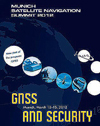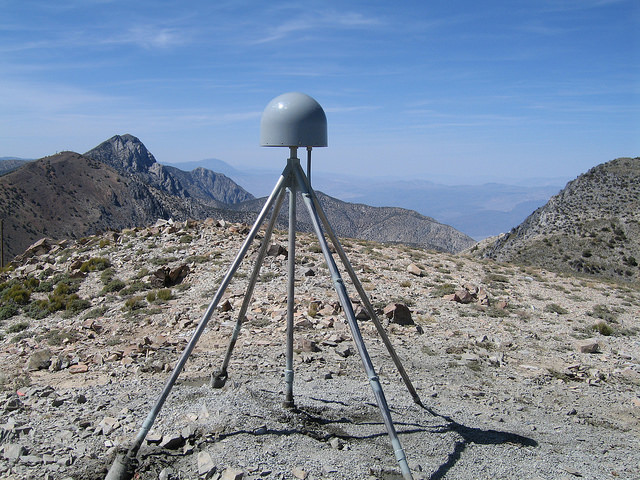
Whenever the annual Munich Satellite Navigation Summit came around, some GNSS program was usually in the ascendant, while others had reversed direction or found themselves treading water. This year, perhaps for the first time, all four major providers had reason to celebrate as the event’s organizers cut the cake at their 10th birthday party.
Whenever the annual Munich Satellite Navigation Summit came around, some GNSS program was usually in the ascendant, while others had reversed direction or found themselves treading water. This year, perhaps for the first time, all four major providers had reason to celebrate as the event’s organizers cut the cake at their 10th birthday party.
Over the past decade, the summit has established itself as the premier European venue for high-level discussion of the world’s GNSS programs and policies.
During that time the conference in Germany, which concluded its most recent iteration on March 15, has reflected the relative fortunes of the various systems in often dramatic form, such as the foreshadowing of Galileo’s abandonment of the public-private partnership model in 2007.
Global Positioning System
GPS, by now the elder statesman of GNSS, could hail continuing progress on its third-generation satellite development and next-generation control segment (OCX), while apparently escaping — relatively unscathed — the dual perils of Congressional budget cuts and LightSquared interference.
Represented by Deputy Assistant Secretary of Transportation Policy Joel Szabat and GPS Directorate commander Col. Bernie Gruber, the U.S. program was able to herald steady progress in maintaining its constellation while bringing new satellites on line. Gruber told his Munich audience that the user equivalent range error (UERE) of the signals in space from the first two GPS Block IIF space vehicles (SVs) was 38 centimeters, compared to 86 centimeters for the 31-SV constellation as a whole.
Block IIF space vehicles (SVs) 3 and 4 have been built and placed in storage, while numbers 5 through 8 are on the assembly line or undergoing integration and testing. And, although the schedule for delivery of GPS III spacecraft may be stretched out, the GPS Non-flight Satellite Testbed — a prototype GPS III spacecraft also known as SV0 — was powered up January 10, keeping the program on track for an initial launch in 2014.
GLONASS
Meanwhile, the Russian system GLONASS, which completed its long trek back to full operational capability last December, has a 347 billion ruble (US$11.81) budget approved for through 2020, by which time the system is scheduled to have 24 satellites transmitting both the new CDMA and legacy FDMA signals.
Program officials expect to enhance GLONASS so as to operate with more than 24 satellites in the constellation almanac in the coming months, supporting plans to eventually expend the constellation to 30 SVs. Later this year, the agency will launch its second next-generation GLONASS-K spacecraft, according to Sergey Revnyvikh, director of the Russian Federal Space Agency’s mission control center.
COMPASS
China’s Compass/BeiDou-2 system, which was allocated its own session during the Summit, will launch 5 satellites this year to join the 11 already in orbit, said Li Xing, a representative of the China Satellite Navigation Office. This will support a planned declaration of initial operational capability (IOC) for a regional system covering 84˚E to 160˚E and 55˚S to 55˚N.
According to Professor Zhao Qile of Wuhan University’s GNSS research center, the positioning accuracy of 10–20 meters within that region available with the current constellation is expected to improve to 5 to 10 meters, based on a 5+5+4 (GEO, IGSO, MEO) configuration by the end of 2012
In response to a question from the audience regarding when a complete Interface Control Document (ICD) would be publicly available, panel moderator Lu Xiaochun, from the Chinese Academy of Sciences National Time Service Center, said, "Our ICD is a test version. [BeiDou] data is not stable now. Maybe by the end of this year we may be able to release an ICD for the [satellite] message data and orbits."
Galileo and EGNOS
The European GNSS program expects to gain an additional €7 billion (US$9.1 billion) budget for 2014–2020 to support Galileo and the European Geostationary Navigation Overlay Service (EGNOS, a satellite-based augmentation system that currently provides differential corrections to GPS signals), according to Paul Flament, Galileo and EGNOS program manager for the European Commission.
The Galileo program has already contracted for development and manufacturing of 26 operational satellites, including the two in-orbit validation (IOV) spacecraft launched last October and two more expected to go up this coming September.
Javier Benedicto, head of the European Space Agency (ESA) Galileo Project Office, outlined that ambitious schedule to get the additional 22 satellites into orbit using a combination of Russian Soyuz rockets carrying two satellites each and modified Ariane 5 rockets with four spacecraft aboard each: three Soyuz launches in 2013 (beginning the second quarter of the year), two Soyuz and one Ariane 5 launch in 2014; and two Ariane 5 launches in 2015.
Along the way, the program expects to declare an initial operational capability in 2014. The program still needs to fund an additional four SVs to reach its planned 30-satellite constellation (27 + 3 spares).
Meanwhile, the European GNSS Agency (known by the acronym GSA), will open its new offices in Prague, Czech Republic, this September, from which the organization will continue its security and market development responsibilities for Galileo and EGNOS.
Indian and Japanese Regional Systems
Representatives of regional programs in India (GAGAN, the GPS-Aided Geo-Augmented Navigation system, and Indian Regional Navigation Satellite System) and Japan (Quasi-Zenith Satellite System, or QZSS) also presented updates on their activities.
Mikio Aoki, director of the Japan’s Secretariat of Strategic Headquarters for Space Policy, said that a budget request would be submitted in April to fund construction of a four-satellite QZSS by the end of this decade, following a cabinet decision last September to accelerate development of the system as quickly as possible.
Suresh Kibe, a consultant to the India Space Research Organization said that the second GAGAN satellite would be launched into geostationary orbit at 82˚E later this year. It will join the first spacecraft launched last May, which is now operational from its orbital location at 55˚E.





